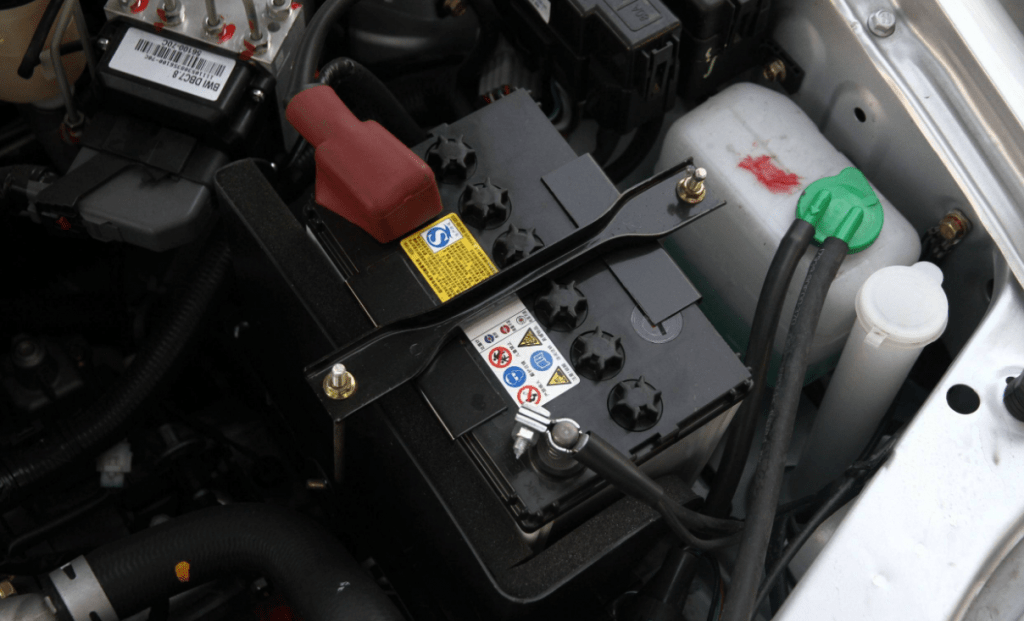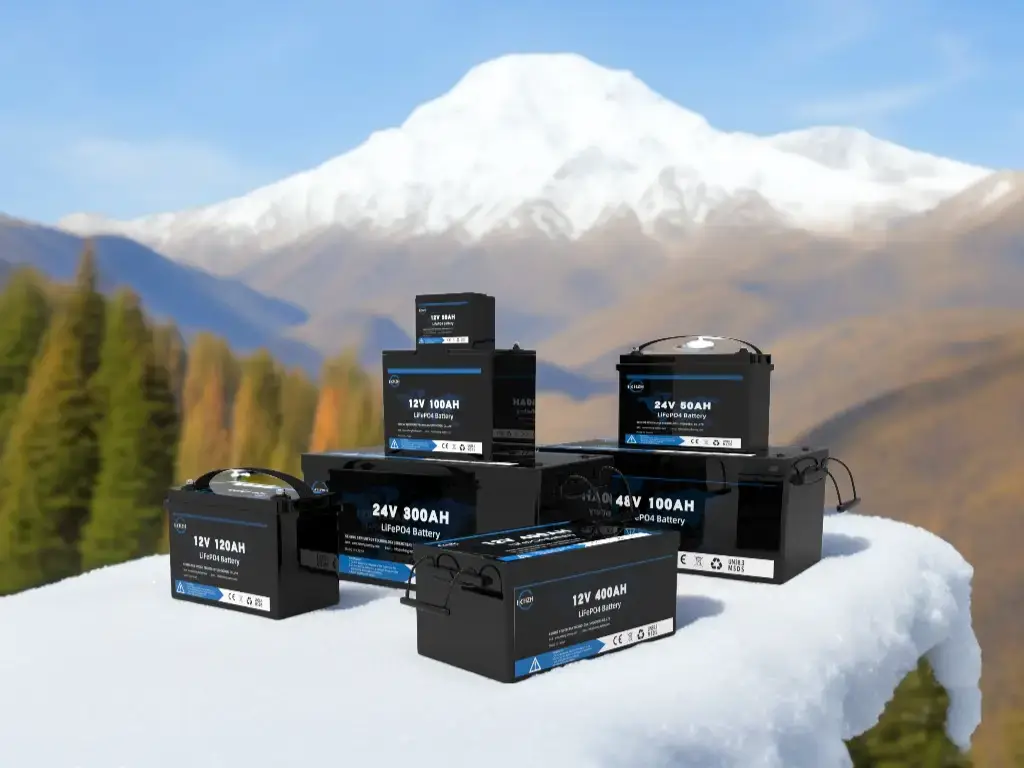How Long Do Golf Cart Batteries Last? This is a loaded question with several factors contributing to the lifespan of a golf cart battery, such as temperature, depth of discharge, charge and discharge rate, etc. But for most common situation,they may last anywhere from months, up to 3-7 years under the right circumstances. For most lead acid battery, the lifespan will be 3-5 years almost, for LiFePO4 battery, the lifespan will be 8-12 years under correct use conditions. But when left idly in high temperatures for long periods of time (such as in a hot garage in the summertime) or when left unused for months, it can really take a toll of the lifespan.

What is main type of golf carts batteries?
Deep Cycle Lead Acid Battery
These types of batteries are relatively large and are composed of two cells with lead and lead oxide and are maintained by a sulfuric acid and water solution. Unlike most known renewable power sources, the capacity of the Deep Cycle Lead Acid Battery is virtually variable and is dependent on the electrolyte levels in each cell. The aforementioned electrolyte levels, if an when properly maintained, poses the ability to supply high currents while maintaining power proportionate to its size and weight.
Since they first rolled in the golf course, deep cycle lead acid batteries are the most economic power sources for electric golf carts and modern low-speed electric vehicles. Lead Acid Batteries remain a popular choice for golf cart owners because of their economic maintenance and their time-tested tolerance for extreme usage. Since their invention in 1859, certain modifications and advancements have made this a pragmatic choice, especially for the Do-It-Yourself types who refuse to avail of professional maintenance services as much as possible. Beyond their very cheap and attractive costs in purchase and maintenance, they are generally accessible, coming in a variety of shapes, sizes, and configurations.
Lithium-Ion Batteries
Since discovering the near limitless benefits of this compound, Lithium Ion has been the most preferred choice for batteries and power storage applications. Like their first generation counterparts, lithium-ion batteries are made up of power-generating, conductive surfaces called cells. During the charging cycle, lithium ions move back and forth between its positive and negative electrodes before taking the energy in for storage. The ions, then, move back to the positive electrode when used to produce energy which, in turn, provides power.
The charge and discharge process, while appearing simplistic and convenient, gives lithium-ion batteries cycle times of 5,000 thereby extending battery life and allowing prolonged use in between charges. Likewise, since lithium-ion batteries have no liquid electrolytes, they are free from any fluids that consequently require a constant need for fluid refilling and fluid level monitoring is unnecessary.
Being significantly smaller than their lead-acid counterparts, the Lithium-Ion battery has a more compact storage than the traditional deep cycle variants.
What Factors Affect Golf Cart Battery Life?
There are several things that can affect your cart’s battery life, including usage, charging habits, and any custom golf cart features that may draw extra power during your drives. If you drive to the golf course, play a round, and drive home on your cart multiple times throughout the week, your battery will not last as long as someone who only takes their cart out on the weekends or during certain seasons.
How Can I Prolong My Golf Cart’s Battery Life?
Make sure that you don’t overcharge the battery, as doing so can actually damage it. Invest in an automatic charger that will turn itself off once the battery is fully charged, or set a timer so that you remember to turn off a manual charger. Try to charge the batteries after each use; if anyone tells you to drive your cart until the batteries die, you can politely inform them that the pros at Golf Carts warn against it – lead acid batteries won’t last as long if you discharge them fully.
For lead acid batteries, It’s also important to clean the batteries and check the water level on a regular basis. At least once a month should do. Be sure to use distilled water when filling the water level up to the appropriate marker.
Last but not least, don’t leave any devices on. Radios, lights, and other accessories can drain the battery power, possibly leaving you stuck out on the course. If you really want to make your battery last as long as possible, drive conservatively. Avoid steep hills and don’t exceed the weight capacity.
how to charge golf cart batteries
How to charge a lead-acid cart battery
The process of charging this type of battery isn’t uncomplicated, so do it correctly and extend the life of the battery and cut back on the number of times you seek golf cart repair. Follow these steps:
-Read all of the instructions that came with your battery twice.
-Plan to routinely charge your battery after every use so it’s always ready to go.
-Charge in a well-ventilated area to avoid gases that build up during charge time.
-Take a pass on charging your golf cart in high temperatures.
-Understand that ion batteries needn’t be fully discharged to take a new charge.
-Double check voltage settings and compensate for temperatures above 80-degrees F.
-Check water levels and tighten vent caps.
How to charge a lithium-ion cart battery
-Read the instructions appearing on the literature that came with your battery.
-Don’t charge the battery if the temperature is extreme; either too cold or hot.
-Turn the cart off while undertaking the charging process so the battery reaches a proper saturation point.
-Don’t fully-charge because less is always better when it comes to lithium-ion.
-If the battery or charging unit starts to heat up in mid-process, give it a rest.
-Become accustomed to the way your cart battery indicates readiness. When in doubt, read the manual
What is the best battery for electric golf carts?
Lithium batteries outperform lead-acid in every way and have boosted the overall experience of driving a golf cart. Lithium has a long list of advantages over lead-acid but comes with a higher retail price. A quality lithium-ion battery doesn’t need to be refilled with water and typically lasts owners up to 10 years, several times the life span of the average lead-acid battery. A common misconception about lithium batteries is that they don’t tolerate the cold well. Like all batteries, lithium battery performance degrades the colder it gets – however, in temperatures down to 32°F (0°C), Keheng LiFePO4 batteries will still deliver about 90% of their rated capacity. Additionally, our batteries will deliver about 70% of their rated capacity in temps as low as -4°F (-20°C). Temperatures below the 32°F mark will noticeably reduce both efficiency and usable capacity of lead-acid batteries, providing just 70 to 80 percent of its rated capacity at 32°F.
To ensure quality performance and optimal life span, it’s important that the lithium golf cart battery you choose is the right size for your application. keheng 48V battery doesn’t modify existing lithium battery technology to work best in a golf cart, but rather was designed from the ground up to be the best lithium battery available for any golf cart. Golf carts are speed limited, but the higher voltage of a lithium battery provides more power, which increases golf cart acceleration. Lead-acid and other lithium batteries need to be connected in series so you can get 48 volts from your entire battery bank. The keheng 48V battery is connected in parallel, which means that you can connect additional batteries to customize how much battery capacity to meet your desired mileage range.




